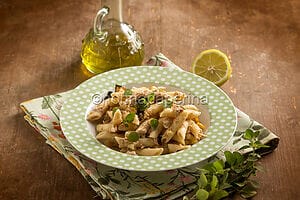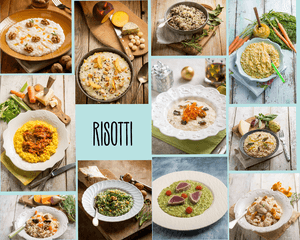Fruits

The properties of fresh fruits
It is well known that fresh and seasonal fruits are good for you. However, the average consumer has only a faint idea of its real impact on the body. We can affirm that fresh fruit is a true elixir of long life. It is no coincidence that nutritionists place it at the base of the food pyramid. Obviously, each fruit has its own particularities, but it is possible to identify some characteristics in common, or at least rather recurring ones. For instance, the majority of fruits include both vitamins A and C.
In a similar vein, mineral salts such as potassium are abundant. The sugar content is variable, but sucrose and fructose are the predominant ones. The vast majority of fruit, then, is low in fat and rich in fibre. Also noteworthy is a general abundance of antioxidants, present above all in the peel. The vast majority of fruit, then, is low in fat and rich in fibre. Mineralizing, diuretic, detoxifying, mildly laxative, and digestive activities are some of their effects on the body.
How to select fresh fruits
It is essential to opt for fresh fruits, or rather, very fresh ones, at a stage of ripeness immediately following harvest. The reason is simple: vitamins tend to deteriorate over time. Washing also causes the fruits to deteriorate. So shouldn’t fruits be washed?
Washing could be harmful because fresh fruits are treated with chemicals. It is advised that you only take this action if you are certain that the fruit is the result of organic and biodynamic farming. For the remainder, it would be a good idea to buy fresh fruit locally sourced, or at least grown, not far from your region of residence.
Fruits in the kitchen—some ideas for you!
The best way to consume fresh fruits is in their raw state. However, as everyone knows, fruits play an important role in Italian cuisine and beyond. It is possible to make splendid jams or use them for the preparation of cakes and desserts.
Juices, smoothies, and centrifuged goods are a broad subject, with dried fruit unquestionably taking centre stage. However, it is a crucial component in savoury recipes, particularly when creating a balance of sour and sweet flavours. The possible combinations are countless and involve all categories: first courses, second courses, side dishes, etc. Below you will find a large variety of recipes, enhanced by the presence of fresh fruit.
The main fruit-based recipes
As we have seen, fresh fruits are not only perfect for raw consumption but can also be used as an ingredient in tasty recipes. It is therefore worth investigating further, starting with the recipes in which fruits act as the protagonist and not just a supporting ingredient.
Jams and marmalades: In reality, jam and marmalade are the same thing. Simply put, jam is made by definition with citrus fruits, while marmalade is made with any other fruit. The procedure is essentially the same and involves cooking the fruit together with large doses of sugar, enriched with lemon juice. Jam and marmalade are perfect fillings; they go well on toasts, in tarts, etc.
Compotes: This term indicates preparations similar to jams and marmalades but much less sweet. Lower doses of sugar are used, so that the sweetness comes almost entirely from the fruit. By virtue of its flavour, it can also be used to season savoury dishes in order to give them a sweet and sour taste.
Juices and smoothies: Obviously, juices and smoothies cannot be missing from this list. If freshly made, they preserve the nutritional properties of the fruit; therefore, they represent a resource for those who want to give authenticity to their eating style.
Fruit creams for sweets and desserts
Fresh fruits can also act as a supporting element or as an ingredient capable of flavoring. It can play this role when preparing creams. For example, custard can be flavoured with various types of fruits. There are two approaches to this. In the first approach, zests, or citrus fruit peels, are used to infuse the milk. In this case, the cream takes on a slightly bitter but more aromatic scent.
In the second approach, the pulp is used, it is pureed or even cooked. In this approach, the addition occurs at a later stage but allows for a good blend to be obtained.
The most likely ingredients for flavouring custard are sweet fruits such as red apples, bananas, mangoes, etc. In any case, a good margin of discretion is allowed; it all depends on being able to expertly combine the various flavours.
The main nutritional properties of fresh fruit
Having reached this point, it is worth delving into another aspect, namely the nutritional properties of fruits. I have already mentioned the presence of some active ingredients, but here I talk about the most common ones, which are found more or less in all fruits, describing their effects on the body.
Vitamin C: Vitamin C is generally associated with oranges, but in reality, it is found in all fruits. It is a fundamental substance as it supports the immune system and facilitates the absorption of iron, which in turn is essential for better oxygenation in the blood.
Potassium: Potassium is a very common mineral, involved in most metabolic processes. It regulates blood pressure. Thus, it is crucial to follow potassium requirements, particularly for hypertensives.
Fibre: Fibre is also an extremely common element in fruits. They serve a number of purposes, but they primarily control intestinal transit, which promotes proper digestion.
An overview of seasonal fruits
Fresh, in-season fruits are a healthy diet staple for anyone looking to enhance their health. Knowing the season of the different species is crucial due to this. Here I give a succinct yet comprehensive summary, mentioning the fruits that correspond with each season.
Citrus fruits, such as oranges, mandarins, kumquats, and citrons, are among the wintertime fruits. But we also discover persimmons, medlars, pomegranates, apples, and rowanberries.
Strawberries, early cherries, lemons, and plums are among the springtime fruits. We discover berries, bananas, watermelons, melons, figs, “classic” cherries, peaches, apricots, and black cherries in the summer. Lastly, pears, some late-season persimmon kinds, grapes, avocados, and perhaps lemons are all associated with autumn.





















